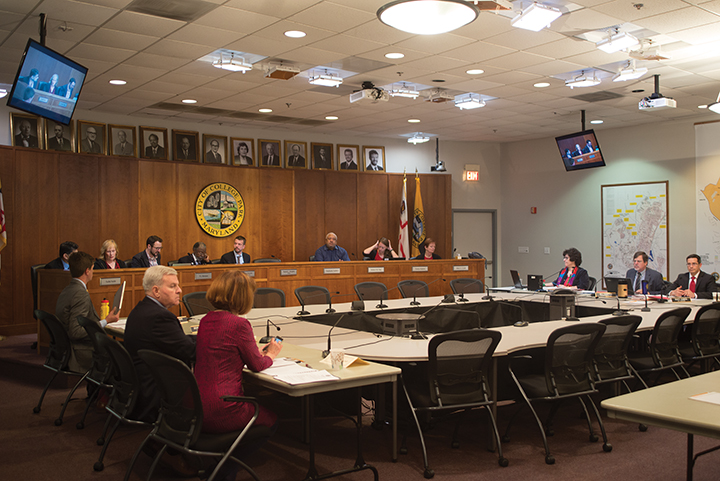By Audrey Decker
For The Diamondback
The College Park City Council discussed projects to enhance the quality of living for the city’s residents during its work session Wednesday.
The council discussed a grant of nearly $90,000, providing funds for the first phase of a feasibility study for the design of a side path along Campus Drive. During this first stage, 30 percent of the path will be designed.
The path, which would be located on University of Maryland property, would be 10 feet wide, catering to pedestrians and bicyclists and built on the north side of Campus Drive between Route 1 and the Rhode Island Avenue Trolley Trail, according to the city’s agenda.
The study could begin as early as December with the design potentially finalized by March, said Steve Beavers, the city’s community development coordinator. The city and university are working together on an agreement to work on the site, Beavers added.
When College Park was first developed, many areas were not built with sidewalks, said Mayor Patrick Wojahn. As students and others populated College Park, the city has become more pedestrian- and bike-oriented, he added.
This construction would be a part of a larger design project for the Route 1 corridor, said District 2 Councilman P.J. Brennan. More specifically, the $89,600 grant for this path requires the city to give a 20 percent match. The total cost would be at least $112,000, depending on how much the city decides to spend, Beavers said.
This path would benefit both the residents and the students living in the city’s neighborhoods, said Brennan.
“Sidewalks in general improve the value of a city and community, and a lot of residents should be excited about these sidewalks because they improve property value,” Brennan said.
The council is always looking to improve the city’s walkability and connectivity, Brennan said. Wojahn said the council must be creative in various transportation routes related to this project.
Sidewalks are not the only transportation routes needed in this area, Wojahn said.
The project will need a bridge or boardwalk in some areas, as Paint Branch stream is near Campus Drive. The council is exploring these alternatives and their costs, he added.
As the council continues to look at new possibilities for transportation routes, the group also discussed finalizing an ordinance amendment regarding chain link fences in the city.
This debate has lasted a few years, Wojahn said, and the goal of the legislation is to make it easier to build fences in College Park’s neighborhoods. The legislation would also help residents follow the proper requirements and codes to build a fence in their yard, he added.
The council agreed a variance — a permit allowing deviation from the rules set forth — is not needed to replace a chain link fence if it is already on a resident’s property or yard. However, the council must first vote on this change before becoming official.
“We want to encourage residents to make their fencing more aesthetically pleasing,” Wojahn said. “Personally, I do not think it is bad to have a fence in front yard. All we want is to make sure that our neighborhoods look nice.”
During a public hearing in July, residents gave their input on the fencing regulations. They raised issues with the difficulty of getting a permit or variance, requesting the process become simpler, according to the city’s agenda.
Scott Somers, the city’s manager, said the fence issue has been an ongoing discussion between the council and residents.
“It has been discussed for a very long time,” Somers said. “We are trying to find some middle ground here that we think people will support. I don’t think everybody’s going to like it or not like it, but we are trying to find a middle ground.”



